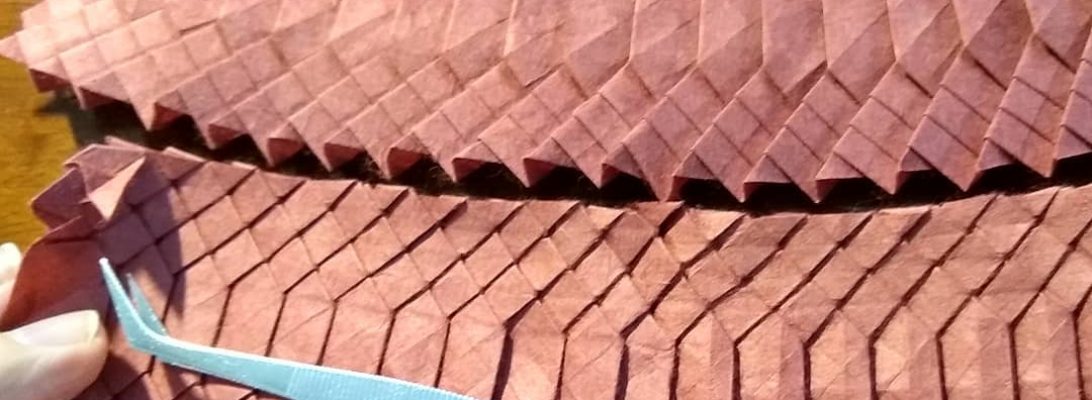I have always found ancient Egyptian symbology and art fascinating. Their attention to high graphic detail, the use of natural elements in depictions of deities, the use of gold and gemstones sublime. When I first saw the diagrams for Peter Bucan-Symons astonishing “Scarab Amulet”, I knew I needed to fold it.

From his forthcoming book “Folding Fantasy 3”, it is one of the many stand-out designs that are so terrifyingly complicated but so enticing. As part of his edit team, I also had the rare privilege of test-folding it before it has reached “the wild” as it were.
From a single 90cm square of Kraft (I keep a 90cm and a 60cm roll of Kraft in my stash all the time, they are my goto test-fold papers), via initial hex-pleat pre-creasing, we fold a many-lobed base that is then thinned, subdivided and refined to isolate, skillfully, all the necessary stickey-outey flaps in the right places.

Designing said bases is complex (at the moment beyond my feeble brain), but I like how PBS takes the time in this book to explain his methodologies, requirements and compromises for a whole bunch of the models in the book – a fantastic reference volume indeed.
Once all the flaps were isolated, the process of refining (thinning and shaping) them could begin. With so many required points, the layers really add up – managing that thickness is a real achievement. Thinner paper would help – indeed I am sure there are folders out there way more nimble fingered than me who could take it smaller, but you would need to really consider the paper choice here. Paper needs to be thin and tough (there is a LOT of sinking), it must also allow you to reverse folds cleanly (unlike a lot of laminated papers and foils that leave bunched up “kinks” when you reverse the direction of a fold).
Continue reading











